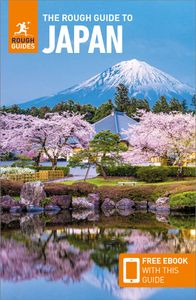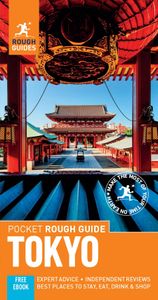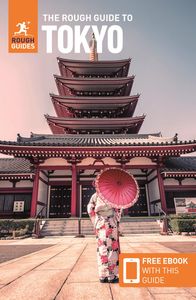Some history
The first monastery on Kōya-san was founded in the early ninth century AD by the monk Kūkai (774–835), known after his death as Kōbō Daishi. As a young monk, Kūkai travelled to China to study esoteric Buddhism for two years. On his return in 806 he established a temple in Hakata (now Fukuoka) before moving to Takao-san near Kyoto, where his ardent prayers for the peace and prosperity of the nation won him powerful supporters. Kūkai was soon granted permission to found the Shingon school which, in a break from contemporary belief, held that enlightenment could be achieved in one lifetime ( for more on Shingon Buddhism). But city life was too disruptive for serious meditation, so Kūkai set off round Japan to find a suitable mountain retreat.
According to legend, when Kūkai left China he prayed for guidance on where to establish his monastery. At the same time he flung his three-pronged vajra (the ritual implement of Shingon monks) clear across the ocean. Later, as he drew near Kōya-san, he met a giant, red-faced hunter, who gave him a two-headed dog. The dog led Kūkai to the top of the mountain where, of course, he found his vajra hanging in a pine tree. In any event, the historical records show that Kūkai first came to Kōya-san in 816 and returned in 819 to consecrate the first temple. For a while after 823 he presided over Kyoto’s Tō-ji temple, but eventually returned to Kōya-san, where he died in 835. Even without his religious work it seems that Kūkai was a remarkable man. After his death, Kūkai’s disciple Shinzen continued developing the monasteries, then collectively known as Kongōbu-ji, until there were more than 1500 monasteries and several thousand monks on the mountain-top. The sect then had its ups and downs, of which the most serious was during the anti-Buddhist movement following the 1868 Meiji Restoration. Today there are 117 temples atop Kōya-san and it is once again a major centre of pilgrimage.
Kōbō Daishi
Kōbō Daishi (known during his lifetime as Kūkai) was born in 774 AD in the town of Zentsūji, 30km from Takamatsu on the island of Shikoku. This pious man walked all over Shikoku as an itinerant priest and spent two years in Tang dynasty China studying esoteric Buddhism, before apparently gaining enlightenment at Muroto Misaki in Kōchi-ken and founding the Shingon (“True Word”) school of Buddhism. Shingon was influenced by the Tibetan and Central Asian tantric Buddhist traditions and this is reflected in the Shikoku temples, with their exotic decor and atmosphere.
In addition to his significant efforts in the development of Japanese Buddhism, Kōbō Daishi is often referred to as the father of Japanese culture; in many ways, he was the Japanese Leonardo da Vinci. He is credited with a phenomenal number of cultural and technological achievements: devising the kana syllabary, opening the first public school, inventing pond irrigation, discovering mercury, and compiling the first dictionary. In addition, he was also renowned as a master calligrapher, poet, sculptor and healer.
Kōbō Daishi died on April 22, 835, the exact day he predicted he would. For his achievements, he was posthumously awarded the title Daishi (“Great Saint”) by the imperial court. Soon after his death, his disciples began a tour around the temples of Shikoku associated with the Daishi, thus establishing the pilgrimage as it is known today (see The Shikoku pilgrimage).
Okunoin
Okunoin (奥の院) is Kōya-san’s vast cemetery. Stretching away to either side, the forest floor is scattered with more than 200,000 stone stupas of all shapes and sizes. Here and there you’ll also find Jizō statues and the occasional war memorial. A large number of historical characters are also buried here, among them the great general Oda Nobunaga.
It’s best to walk through Okunoin in the early morning or around dusk, when lamps light up the path; at these times the only other people you’re likely to meet are the occasional white-garbed pilgrims with their tinkling bells. Wandering slowly along the mystical 2km path, it takes about 45 minutes to reach the cemetery’s spiritual centre, beyond the little Tama-gawa River.
Across the bridge you begin the approach to the mausoleum of Kōbō Daishi. First comes the Hall of Lanterns, where ten thousand oil lamps donated by the faithful are kept constantly alight. Two of them are said to have been burning since the eleventh century, one donated by the former Emperor Shirakawa and another by an anonymous poor woman. After this blaze of light and colour, the tomb itself is surprisingly restrained. Indeed, it’s only just visible within a gated enclosure behind the hall, sheltered by lofty cryptomeria trees and clouds of incense.
According to Shingon tradition, the Great Master, Daishi, did not die in 835 but rather entered “eternal meditation”. He’s now waiting to return as Miroku, the Future Buddha, when he will help lead the faithful to salvation – which is one reason why so many Japanese wish to have their ashes buried on Kōya-san. Next to the Daishi’s tomb you’ll see the octagonal ossuary where ashes are collected. Many of these are destined for the modern cemetery, which lies south of the Tama-gawa bridge on a short cut back to the main road. Large companies maintain plots on Kōya-san for past employees – the space rocket and UCC’s coffee cup are probably the most famous memorials. And note also the “letter boxes” on some monuments for company employees to leave their meishi (business cards).






















